Hall Current 10 Click
R700.00 ex. VAT
Hall Current 10 Click is a compact add-on board that provides economical and precise AC or DC current sensing solutions. This board features the ACHS-7194, a fully integrated Hall-effect-based isolated linear current sensor designed for the current range of ±40A from Broadcom Limited. Inside ACHS-7194 is a precise, low-offset, linear Hall circuit with a copper conduction path located near the surface of the die. Applied current flowing through this copper conduction path generates a magnetic field that the differential Hall sensors convert into a proportional voltage, where after that, the user is given the option to process the output voltage as an analog or digital value. This Click board™ is suitable for AC or DC current-sensing in industrial, commercial, and communications systems.
Hall Current 10 Click is supported by a mikroSDK compliant library, which includes functions that simplify software development. This Click board™ comes as a fully tested product, ready to be used on a system equipped with the mikroBUS™ socket.
Stock: Lead-time applicable.
| 5+ | R665.00 |
| 10+ | R630.00 |
| 15+ | R595.00 |
| 20+ | R572.60 |


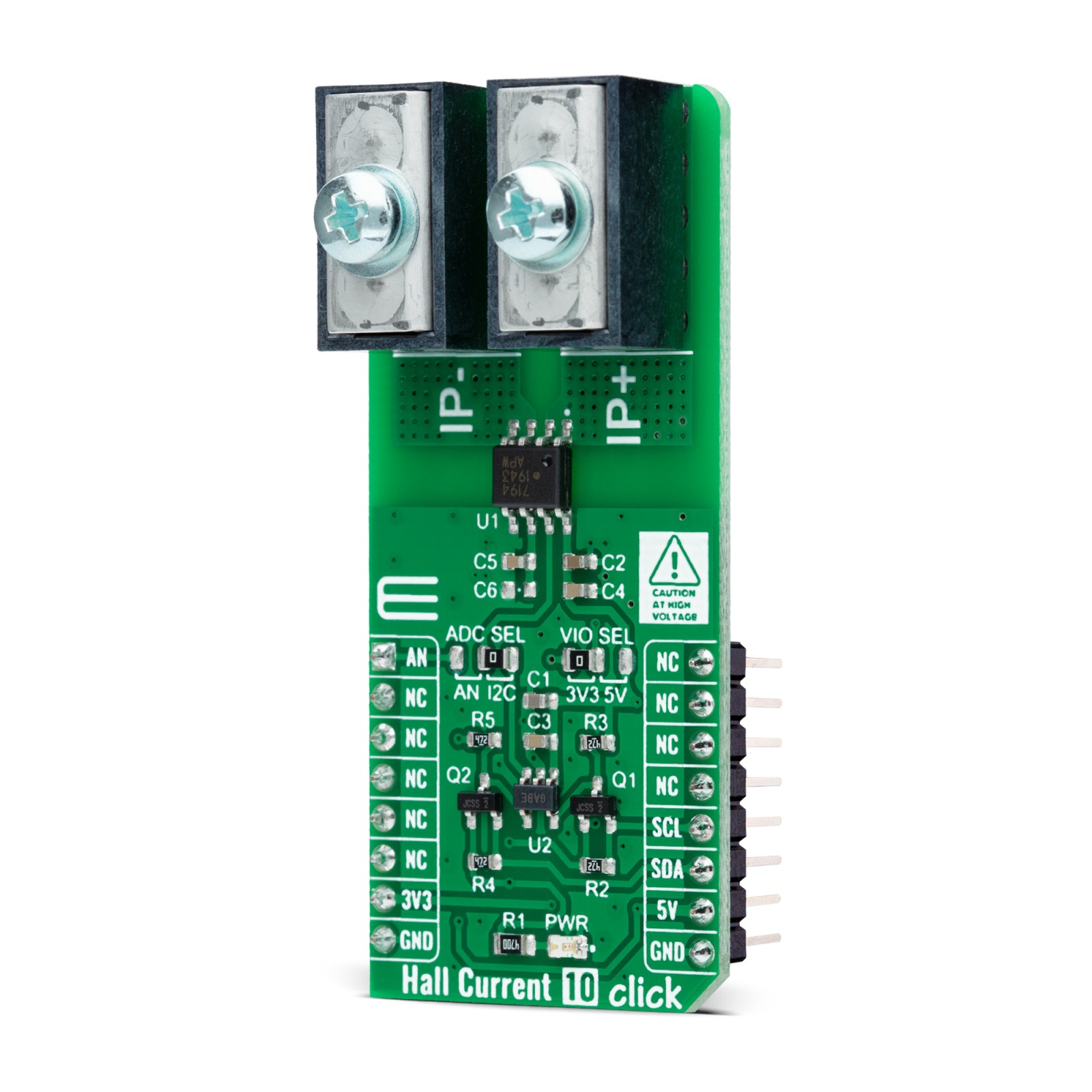

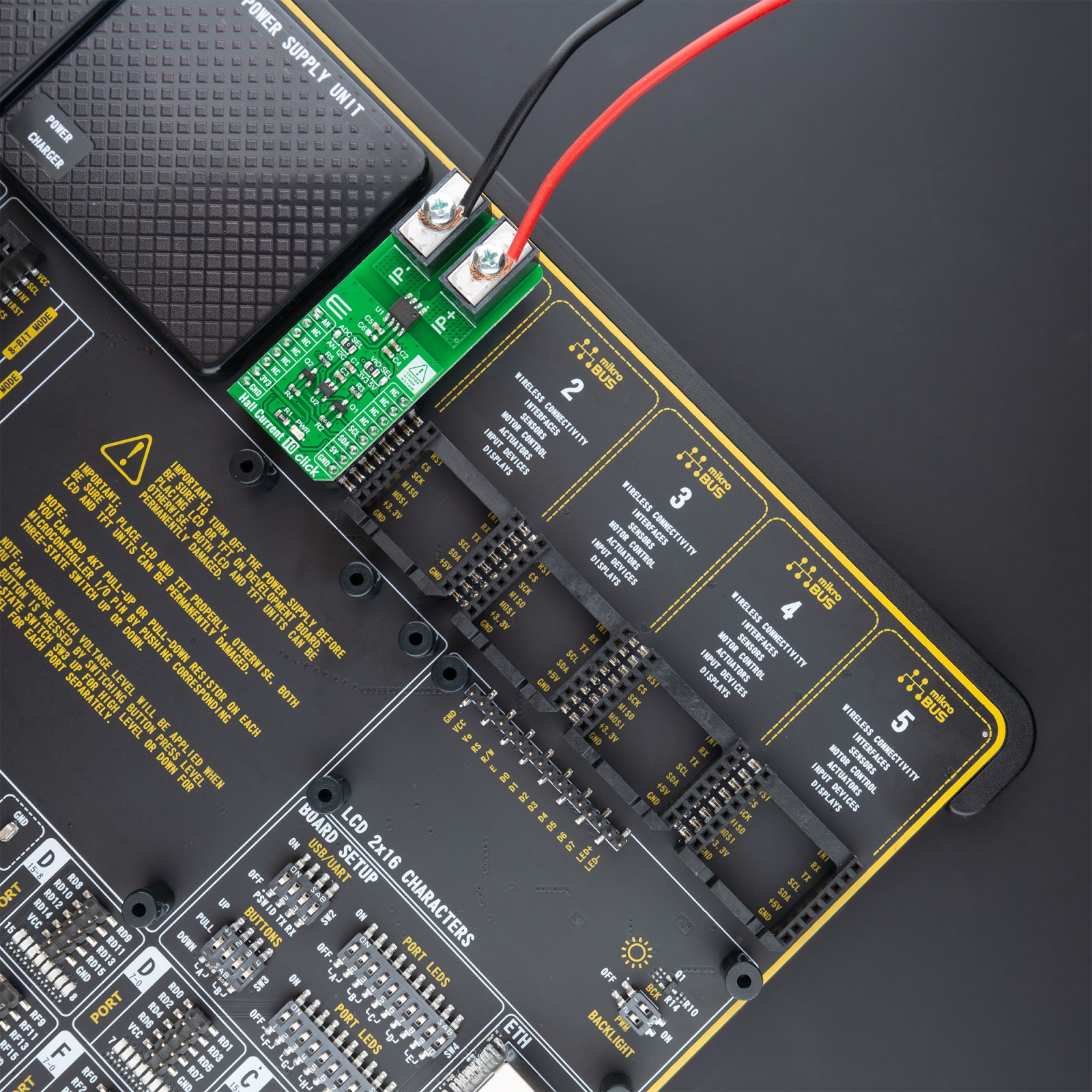

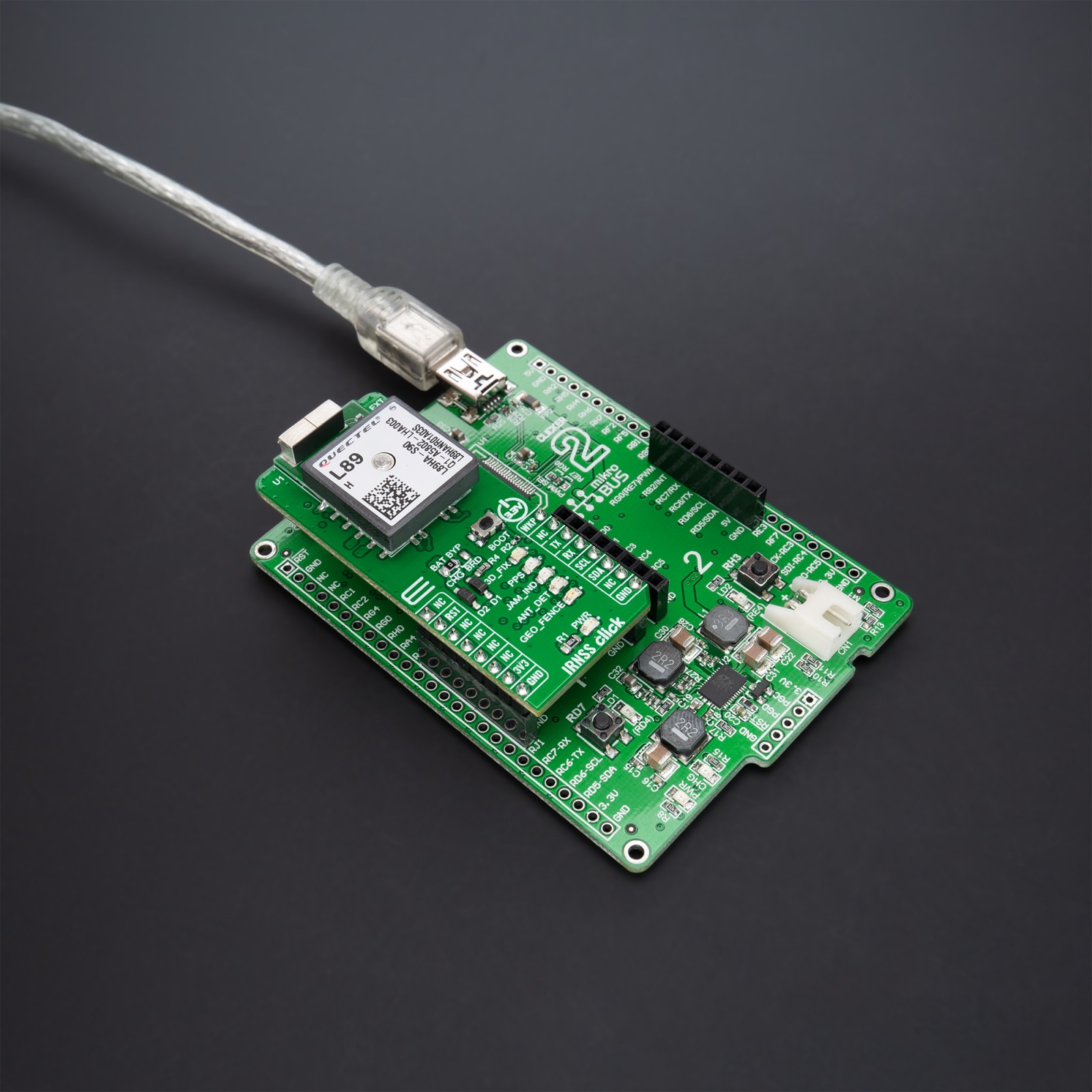
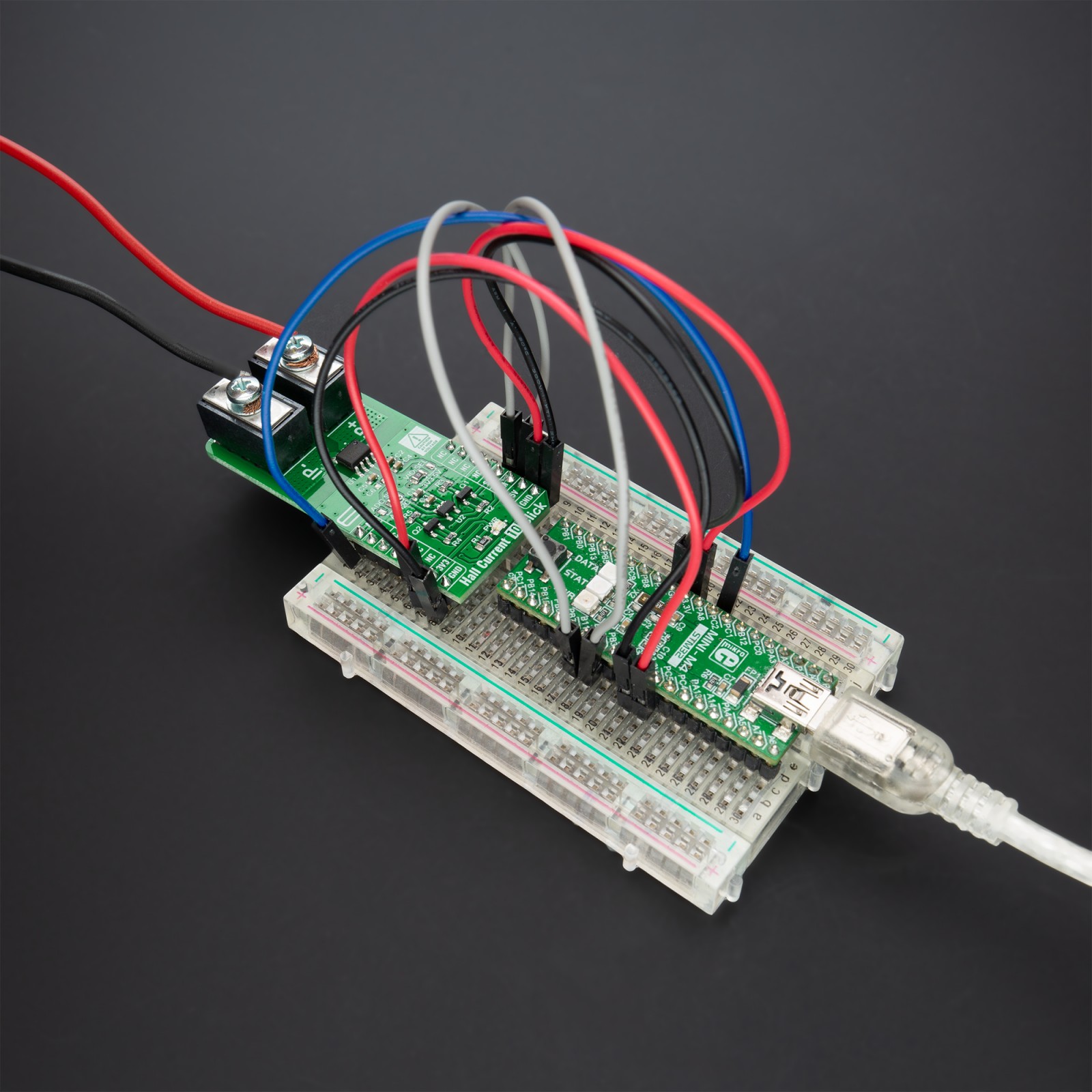
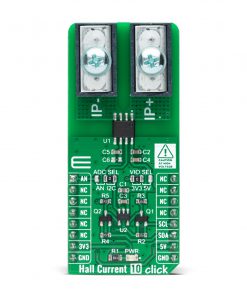
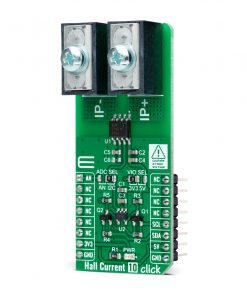
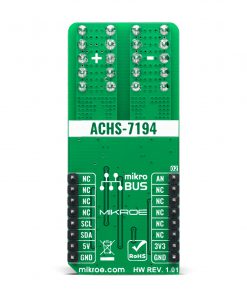
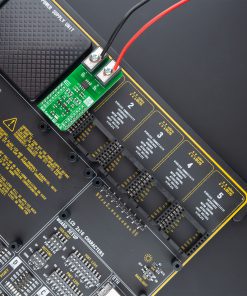
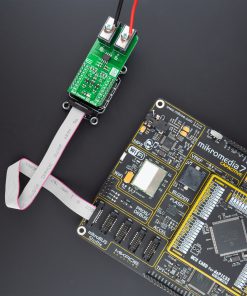
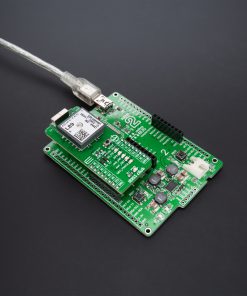
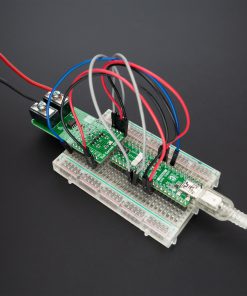
 DO NOT TOUCH THE BOARD WHILE THE EXTERNAL POWER SUPPLY IS ON!
DO NOT TOUCH THE BOARD WHILE THE EXTERNAL POWER SUPPLY IS ON!








